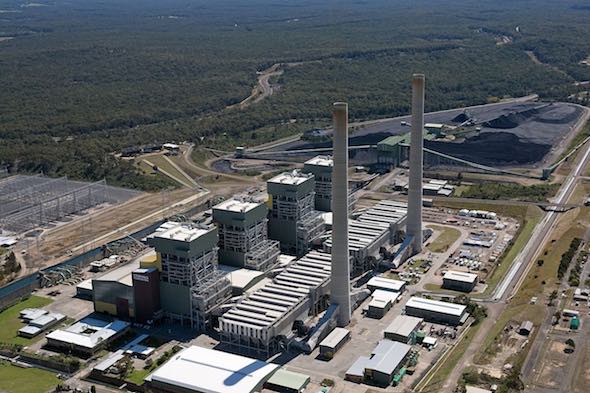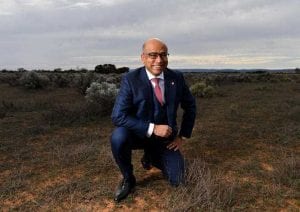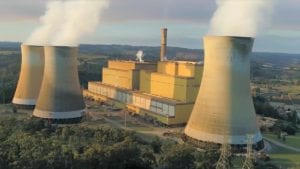The controversial capacity market – at least as imagined by Australia’s leading energy institutions – may be dead in the water as a serious policy proposal, but the owners of the country’s ageing coal generators are ramping up their calls for more funds to help them burn coal for longer.
It’s the dilemma that won’t go away – how to build enough renewables and storage to replace the coal plants due to retire, or how to keep coal plants running long enough to build the new wind, solar and storage capacity that will replace them.
It’s not a question of if, but of when and how.
There have been high hopes that a solution would be found for the first option, but it seems more likely that in the face of infrastructure delays, labor shortages, supply crunches and regulatory and market uncertainty, it’s the second option that will have to be dealt with.
That’s uneasy reading for those backing the likes of software billionaire Mike Cannon-Brookes and his green energy transition assault on the biggest coal edifice of them all, AGL Energy.
AGL went overboard with lights will go out claim
That company’s chair, Patricia McKenzie, went overboard earlier this month when she warned of the lights going out if coal is shut before replacement capacity is built, but how to manage the handover from baseload fossils to flexible renewables remains the biggest headache for policy makers, and investors.
This week, Origin Energy CEO Frank Calabria entered the debate, warning that the owners of coal generators will likely need more funds to keep their plants running if renewables and storage are not built quickly enough.
“There may be a requirement to delay the exit of some of these coal units, and only for as long as needed, to maintain the security and reliability of the NEM,” he said in a speech in Sydney.
“As a result, careful consideration must be given to policies that can help manage the final timeline for coal closures.”
It’s highly significant that this came from Calabria, because after the scheduled closure of the last three units of the ageing and decrepit Liddell coal fired generator in NSW in five months time, Origin’s Eraring coal generator – which at 2.8GW is the biggest in the country – is the next closure on the list.
Eraring closure date not locked in stone
Origin has set a date of August, 2025, as the likely closure date, but Calabria on Wednesday refused to say that was locked in stone. He insists, as he has always done, that that is the earliest option, and Origin retains the right to decide to keep it open longer if the market needs it.
There’s a couple of obvious points to be made here. The first is that if Origin, and AGL, were really really serious about accelerating the energy transition, as they would have you believe, then they would have already invested a heck of a lot more in renewables and wind and solar contracts than they have now.
They would, for instance, have taken a leaf out of the books of US giant NextEra, which is committed to $US95 billion of new renewable and storage capacity – 2025 – as it continues its short goodbye to fossil fuels.
Or they would have made the sort of commitment being talked about by Brookfield Asset Management, which is planning $20 billion of spending in wind, solar and storage in Australia over the next eight years if it gets control of Origin’s energy business, as seems likely.
The other thing is that if the closure date of Eraring is now not certain, then that will create yet more problems for investors in new capacity, because it may cause them to delay that investment. It becomes self-fulfilling.
So much to do, so many delays
The concern is that there is a lot to do, and some of the key infrastructure projects now being built either won’t be particularly useful in the short term, or are heavily delayed – such as the Snowy 2.0 pumped hydro vanity project, the new transmission link to South Australia, and other key network infrastructure.
If not enough is in place – despite the best efforts of the NSW government as it rolls out its own infrastructure roadmap – it won’t be easy for Origin to keep Eraring open, even if required.
For a start, the plant is not enjoying the gymnastics required of it to respond to the growing impact of rooftop solar and other renewables, even though it is probably among the best equipped to do so.
That points to mechanical problems and big maintenance budgets. In the end, though, its biggest challenge is actually finding enough coal to chuck into its boilers, at a cost that won’t cripple it. It could barely do that over the last six months due to floods and the international commodity price crisis.
“It’s important that we have an orderly exit of coal so we have a smooth transition,” Calabria said on ABC Radio Wednesday.
Are secret deals the answer?
One option to achieve this is to save face through secret deals with governments. The energy industry is mighty curious about the contract struck last year between the Victoria state government and EnergyAustralia, the owner of the huge Yallourn brown coal generator in the Latrobe Valley.
Its agreement was painted as supporting a “fast-tracked closure” – to 2028 from 2032 – but the suspicion is that it was more likely deal to ensure it would stay open until at least 2028. Victoria simply wasn’t and isn’t prepared for it to happen any earlier.
State governments can control the exits of most of the coal plants in grids like Queensland and Western Australia – because they own most of them. Origin’s warning about the need for funding reminds us that some sort of mechanism will need to be produced to manage the exit.
All sorts of ideas have come and gone – from Audrey Zibelman’s “Reliability Must Run” idea borrowed from the US, the ANU’s coal exit auction plan modelled on Germany, to the Grattan Institute’s “escrow fund”, and the Energy Security Board’s centralised capacity mechanism.
Plans are still being worked on. In Chris Bowen’s climate and energy department, there is a “firming task force” trying to get its head around the issue of how to encourage coal plants to stay around long enough to know they are not wanted or needed, and how to get new capacity into the market on time.
Untenable closure dates
The ESB is having another crack, too, at a coal closure mechanism and “regulated contracts” that might end up looking like the sort of contract that Victoria entered into with EnergyAustralia, hopefully with more visibility and accountability.
It’s those sort of opportunities that could be driving the interest in assets like Vales Point, recently snapped up by the same Czech investor that holds an interest in the Milmerran coal plant in Queensland, which has the dubious distinction of being the last to close under current schedules – 2051.
Alinta Energy, which still has a seemingly environmentally untenable 2047 closure date plan for the Loy Yang B brown coal generator, was one of the last hold outs for the capacity mechanism, although it conceded it should be separated from whatever is developed to encourage new technology, and should be reviewed each year.
That idea also seemed very dead in the water. But the ongoing delays and bottlenecks, and the lingering uncertainty about the rules that govern the market, may mean something is going to have to change.










